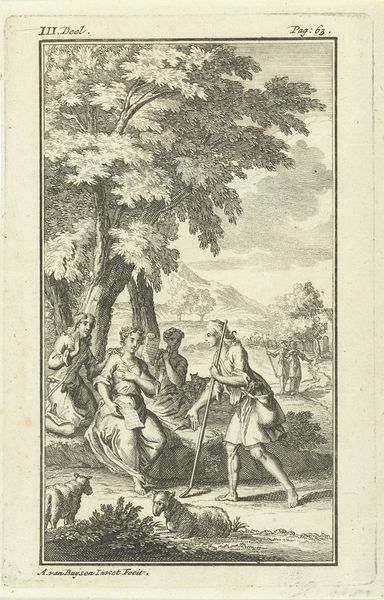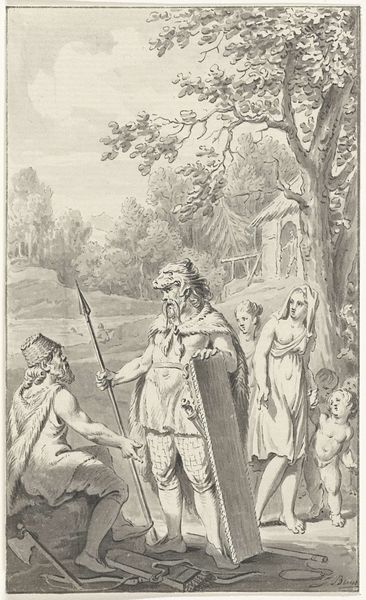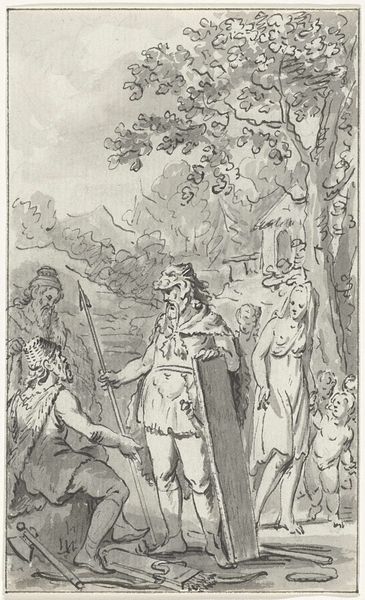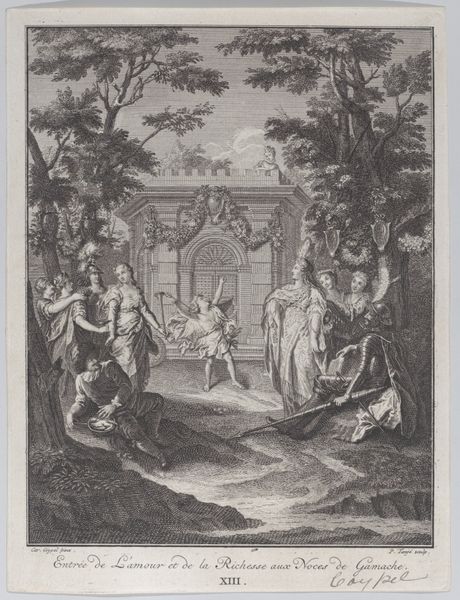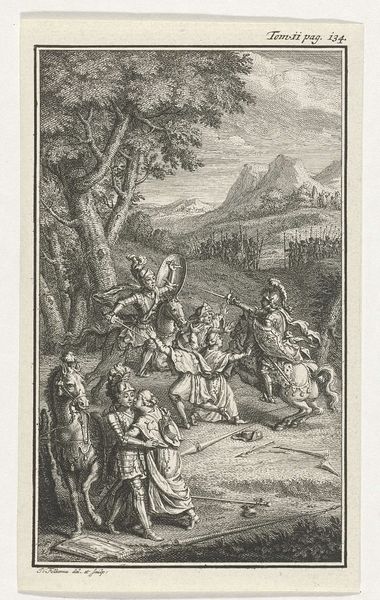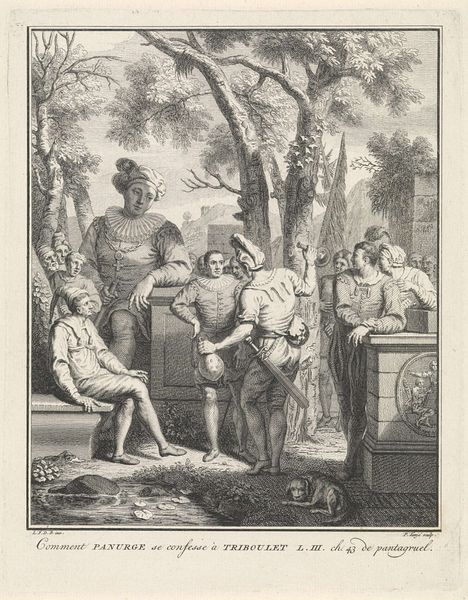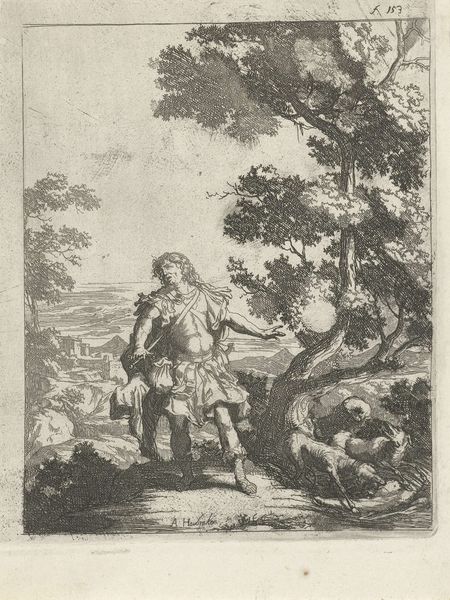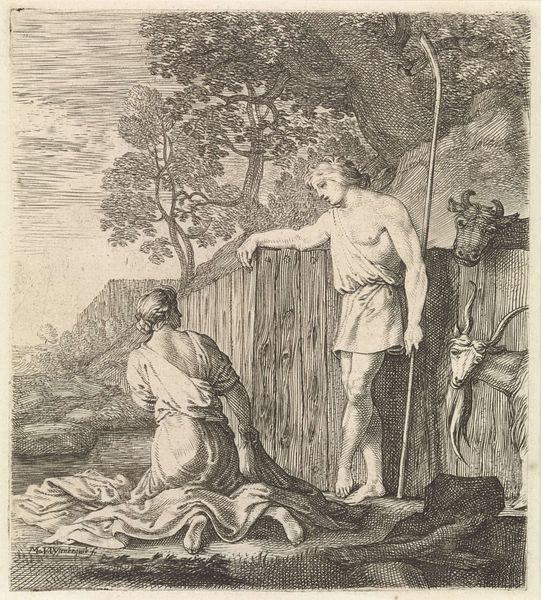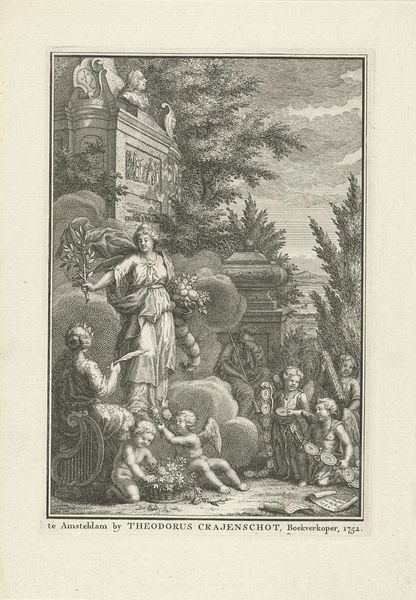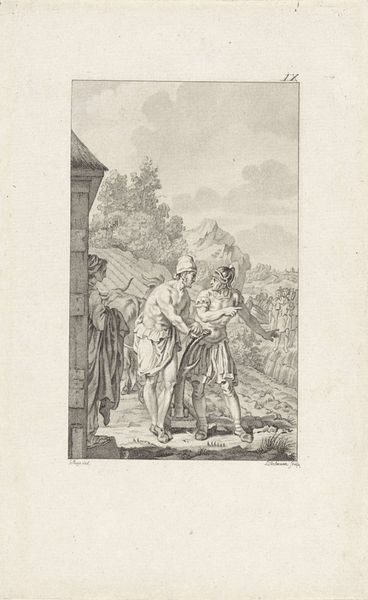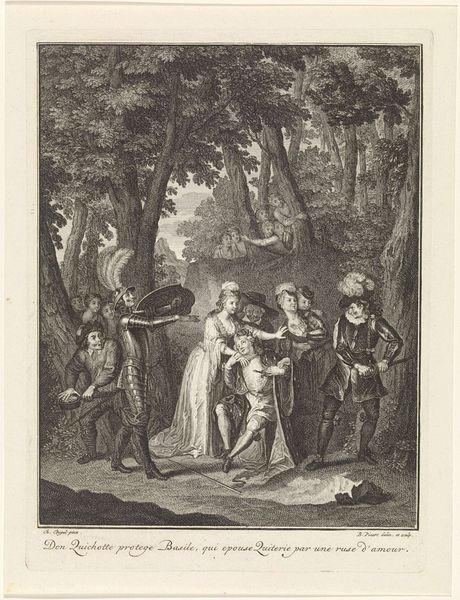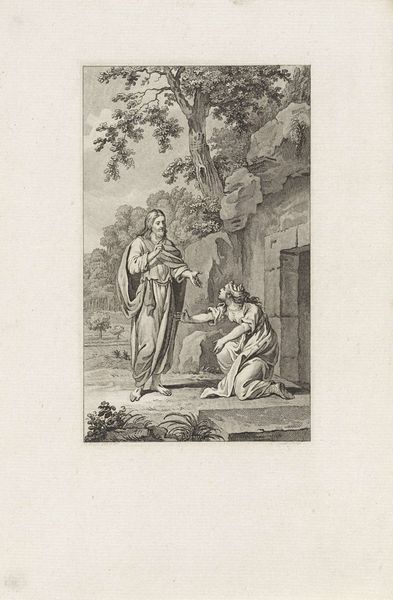
print, etching, paper, engraving
#
neoclacissism
#
narrative-art
# print
#
etching
#
old engraving style
#
figuration
#
paper
#
history-painting
#
engraving
Dimensions: height 178 mm, width 110 mm
Copyright: Rijks Museum: Open Domain
Editor: This is "Kleding en wapenrusting van de Bataven," or "Clothing and Armour of the Batavians," a 1786 etching and engraving on paper by Reinier Vinkeles, here at the Rijksmuseum. The figures seem to be frozen in time, yet there's also something performative about their presentation, like they're posing. What stands out to you about this print? Curator: Well, it's fascinating to see how the Batavians are being represented here. This print is an excellent example of how history painting and narrative art became intertwined with emerging national identities in the late 18th century. Look at the deliberate presentation of clothing and armor; it’s not just informative. What do you think is being communicated through this stylized depiction of Batavian life? Editor: It feels like they are constructing an identity… like looking back to find some foundational cultural roots. The details almost feel… romanticized? Curator: Exactly. This is Neoclassicism, a movement deeply invested in idealizing the past. The "Batavians" weren’t simply being documented; they were being re-imagined and presented as virtuous ancestors, which was part of a broader political project. The print participates in constructing a narrative of national heritage. Do you see how this idealization could serve a specific purpose? Editor: I guess it would give a newly forming nation a sense of shared history and legitimacy. Was this type of historical "recreation" common at the time? Curator: Absolutely. Prints like these were circulated widely, shaping public perception and contributing to the construction of national identity. Consider how museums also played a role, displaying artifacts that reinforced such narratives. What is especially interesting here is that the Batavians didn't even see themselves as a "nation," they were simply one of multiple local groups. Editor: It’s interesting how much of history we see is not necessarily history as it was, but history as it’s been shaped to mean. This print provides insight into the cultural narratives circulating at the time. Curator: Precisely. It encourages us to consider the role of imagery in shaping national consciousness.
Comments
No comments
Be the first to comment and join the conversation on the ultimate creative platform.
